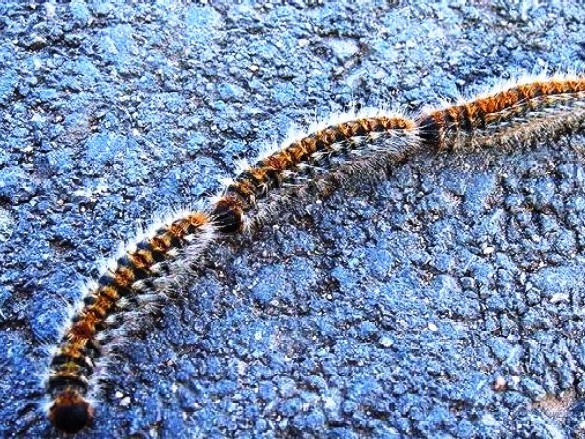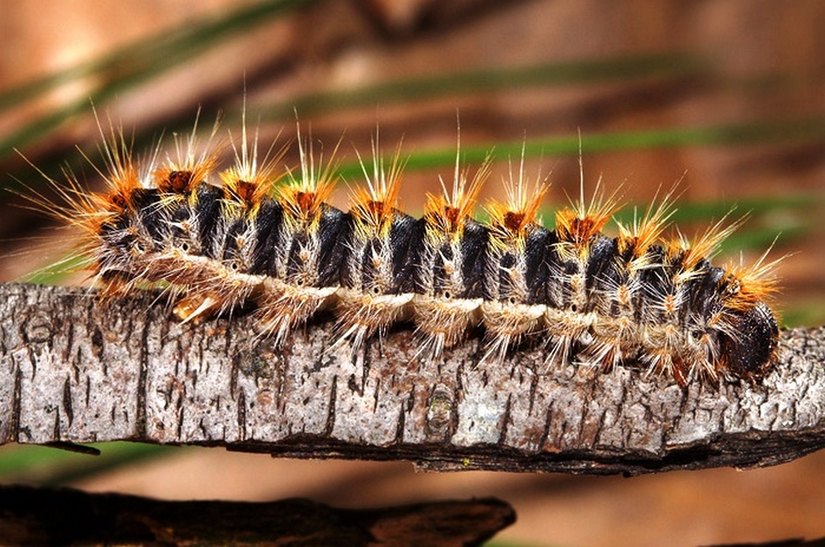Processionary of the pine
The Pine Processionary is a butterfly whose larvae (or caterpillars) develop on conifers, pines in particular, causing damage to plants and causing epidermal and allergic reactions to people and warm-blooded animals. The larvae of the pine processionary are present on plants from autumn until the following spring, when they reach maturity they descend along the trunks in long lines and burrow themselves to transform first into a chrysalis and then into an adult. The appearance of the latter is recorded in summer, but a variable proportion of pupae can stop development and give rise to adults after a varying number of years, while in autumn it is difficult to identify the first nests formed by the larvae by gathering with a lassa net of silk threads some needles, in the winter period the presence of this insect is easily detectable due to the conspicuousness of the large whitish wintering nests, built on the sunniest part of the foliage of the attached plants. which each individual remains in contact with that which precedes him. The mature larvae have a black head and a grayish dorsally body on which the tawny red of the tufts of stinging hair stands out: on the side there are long whitish hairs and the color tends to yellowish.
The damage of the processionary moth on the pines
The pine processionary produces damage when it is in the larval stage. Adult butterflies, while annoying, do not cause direct problems. On trees, the damage is different depending on the age of the larva, and can be of different intensity. Young larvae, those that form in the summer, attack the leaves, which are needle-like. All that remains after their attachment is a thread corresponding to the central rib of the pine needle. Subsequently this necrotizes and dries up and is used by the larvae to reinforce the nest. The adult larvae, the wintering ones, are even more harmful as they completely eat the leaves, with all the needles. They cause disastrous effects if the attack is massive. Furthermore, if the attack is perpetuated over the years, the fate of the tree is total desiccation, and therefore death.
Damage of the pine processionary moth to humans
The larvae of the pine processionary need special attention also for the direct damage they can cause in humans. The hairs that cover the upper part of the larva, in fact, are highly stinging as they contain histamine, a very poisonous substance.They are released by the larvae themselves as a defense. They generally detach under the action of the wind, or they can fall from nests. Since we are talking above all about pines, firs, larches, that is, trees that we can meet in parks or in the woods during a walk, the fight against the processionary moth is made mandatory by law by the various public administrations. microscopic to hook and adhere very well to the epidermal area. Reactions on humans are different depending on the entity and the affected area. They can range from strong allergic reaction to anaphylactic shock!
Periods of disinfestation
In winter (December - January - February) the processionary nests are collected and destroyed, operations to be carried out with the utmost caution to avoid any contact with the stinging hairs of the larvae. At the end of summer (end of August - beginning of September) the foliage is treated with microbiological insecticide with doses of 100 - 150 grams of product in 100 liters of water. These disinfestation treatments provide excellent results against the first and second age processionary larvae. Ecopiakos always uses organic and eco-compatible products for the disinfestation of the processionary moth.




